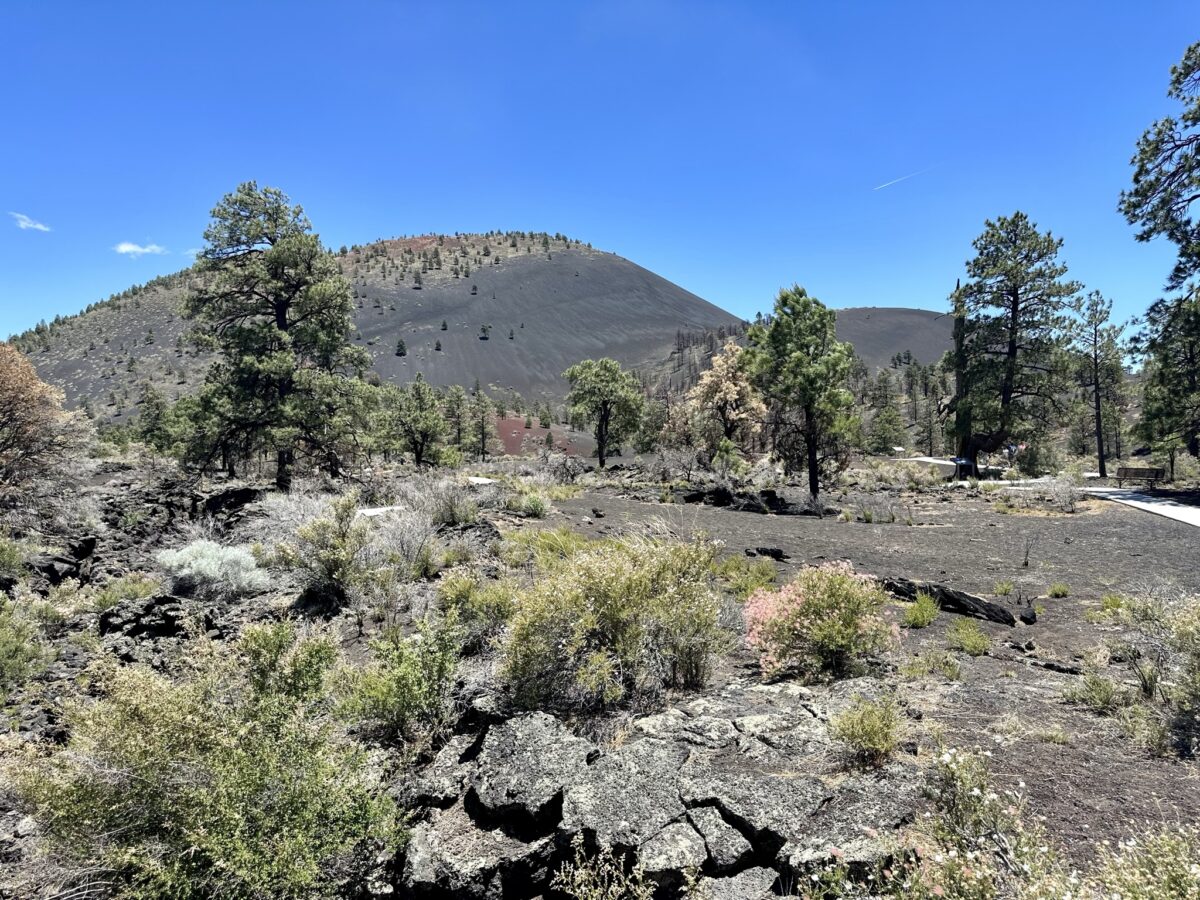More than a thousand years ago, around 1085 CE, a volcano in what is now Arizona had a massive eruption. The ground tore open, and lava shot 850 feet into the sky. At Sunset Crater Volcano National Monument, you can still see the greatly altered landscape and different types of lava left over from the eruption.

Sunset Crater has the type of lava fields you’d expect to see in Hawai’i. The ancient Arizona eruption covered almost 900 square miles with ash and lava. Experts estimate that the ash cloud was five miles tall and could have been seen from Durango, Colorado, and Las Vegas, Nevada.
Now a national monument, Sunset Crater is about a 30-minute drive north of Flagstaff, Arizona. The volcano is one of approximately 600 cinder cones that make up the San Francisco Volcanic Field. The region’s history of intense volcanism dates back about 3 million years.

Sunset Crater gets its name from the colorfully rimmed cinder cone. Explorer John Wesley Powell, who explored the area in 1885, wrote, “The contrast in the colors is so great that on viewing the mountain from a distance the red cinders seem to be on fire.”
Local names given to the crater by Indigenous people also commemorate color and volcanic power. The Hopi call it Palatsmo (Red Hill), the Dilzhe’e Apache say Ha Gudni Káá (Where It Burned), and the Diné dub it Dził Bilátah Łitsoí (Yellow-Tipped Mountain).

The monument’s longer trails are currently closed due to fire damage. But three short trails remain open. The Lava Flow Trail, a one-mile loop, is wheelchair-accessible and an easy stroll. Pets are allowed on the trail’s paved portion. The Bonito Vista Trail, also wheelchair-accessible, is a tiny .3-mile trail that lets you explore a field of cinders. For a close-up look at jagged lava, hike the .25-mile A’a Trail. There’s also a visitor center and plenty of interpretive signage to help you learn about volcanic history. Or you can just enjoy the colors of the cinder cone and local plant life.

Sunset Crater’s trails remain open at night to allow for stargazing. The monument is also an International Dark Sky Park. Rangers offer sky-viewing programs at certain times of year. Visitors can observe meteor showers, learn about constellations, and look through telescopes. The monument’s otherworldly landscape is reminiscent of the moon. In fact, NASA astronauts have trained at Sunset Crater. They practiced collecting rock samples, mapping terrain, and setting up scientific instruments on the monument’s moon-like landscape.
